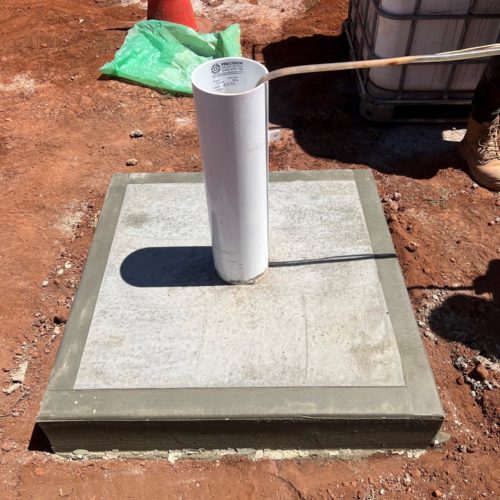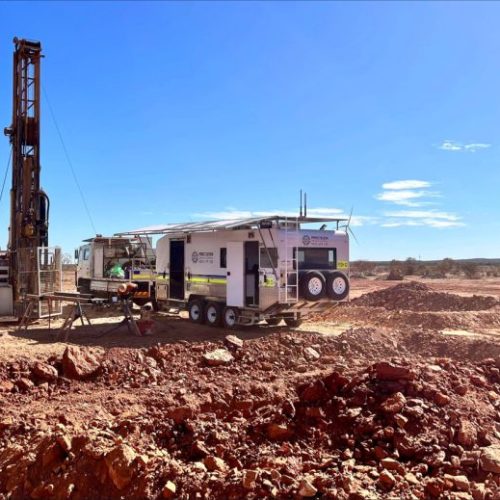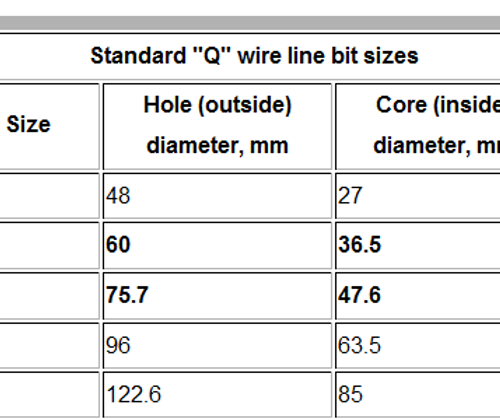In the construction and mining industries, accuracy and efficiency are non-negotiable. Whether you are installing plumbing lines, electrical wiring or HVAC systems, there is often a need to create perfectly round holes through concrete, asphalt or rock without compromising the surrounding structure. This is where core drilling plays an important role. It is a specialised technique that delivers precise results with minimal disruption to the worksite.
What Is Core Drilling?
Core drilling is a controlled method used to remove a cylindrical piece of material known as a core sample from a surface such as concrete, asphalt or stone. This drilling service uses a core drill equipped with a diamond-tipped bit that cuts through even the hardest materials with speed and precision.
Unlike traditional hammer or rotary drilling, core drilling produces smooth, round holes without causing cracks or vibrations in the surrounding structures. It is a preferred technique for projects that require accuracy, safety and minimal mess.
How the Core Drilling Process Works
A typical core drilling process involves a specialised core drill machine fitted with a diamond core bit. These diamond-tipped bits are extremely strong and capable of cutting through reinforced concrete, stone or other hard materials cleanly.
There are three main parts involved in the core drilling technique:
- The core drill motor: Provides the rotational force and pressure.
- The drill stand: Stabilises the drill and keeps it perfectly aligned.
- The diamond core bit: The cutting component that removes the cylindrical core.
Depending on the material and location, operators choose between wet core drilling and dry core drilling methods.
If your project involves more complex or large-scale drilling, you may also consider reverse circulation drilling for deeper ground investigations.
Wet vs Dry Core Drilling
Wet Core Drilling
Wet core drilling is the most common and efficient option for concrete core drilling. Water is used to cool the drill bit and remove debris, which reduces dust produced and extends the life of the drilling equipment. The result is a cleaner hole, minimal dust, and reduced wear on the bit. Wet drilling is ideal for reinforced concrete, stone, and other dense materials where precision and structural integrity are critical.
Dry Core Drilling
Dry core drilling is used where water cannot be introduced, such as electrical or interior installations. It generates more dust, so proper safety gear such as a dust mask and protective clothing is required. This method is suitable for lighter construction jobs or where the surface material is softer and less likely to overheat.
When Should You Use Core Drilling?
Core drilling is a versatile drilling process that supports a wide range of construction and infrastructure projects. Below are some of the main applications where this technique is most effective.
Installing Pipes and Plumbing Systems
When openings are required for plumbing or drainage in concrete walls or floors, core drilling provides the accuracy needed to maintain the structural integrity of the surrounding area. The method allows for perfectly shaped drill holes that match the diameter of the pipes being installed.
Electrical and HVAC Installations
Core drilling is widely used to create openings for electrical wiring, conduits or HVAC systems. Because the technique produces round holes with limited vibration, it prevents damage to the existing framework, which is essential in commercial buildings and residential developments.
Construction and Infrastructure Projects
In large-scale construction projects, core drilling is used to extract core samples for testing. Engineers analyse these samples to understand the strength and composition of the concrete or rock, ensuring that the structure meets safety and performance standards.
Mining and Geological Investigations
In the mining industry, core drilling allows the collection of subsurface samples of rock or ore for exploration. The accuracy of diamond drilling ensures that the core remains intact for detailed analysis of mineral composition and potential yield. An example of this can be seen in our Cataby project (Iluka) case study.
Retrofitting and Renovations
When working on existing concrete structures, core drilling allows for new service lines, anchors or openings without weakening the surrounding structures. The process is quiet, controlled and produces less noise and dust, making it ideal for complex jobs in occupied or operational environments.
For shallow excavations or near-surface installations, air core drilling can also be a suitable option.
The Advantages of Core Drilling
Core drilling offers several key advantages that make it indispensable in modern construction and engineering.
Precision and Clean Results
The diamond-tipped bit ensures that core drilling produces perfectly round holes with smooth edges, even in hard materials such as reinforced concrete. This accuracy reduces the risk of cracking and guarantees a perfect fit for pipes, cables or fixtures.
Minimal Dust and Noise
With wet drilling, water suppresses dust and reduces heat build-up, creating a cleaner and safer work environment. This is especially valuable indoors or in areas where minimal mess and less noise are required.
Versatility and Depth
Using hydraulic core drills, operators can create deeper holes in a range of materials, including concrete, stone and asphalt. The method can be applied vertically, horizontally or even in inverted drilling positions, depending on the site conditions.
Safety and Efficiency
Professional drillers follow strict safety measures and always wear appropriate protective gear. When carried out correctly, core drilling is a safe and efficient process that helps maintain the structural integrity of the surface while achieving high precision.
For projects where water control is a priority, our construction dewatering solutions can ensure safe and efficient water management on site.
Tools and Equipment Used in Core Drilling
Modern drilling equipment is designed for accuracy, reliability and safety. The choice of tool depends on the material, hole size, and depth required. The most common core drills include:
- Electric core drills: Used for small or indoor projects.
- Hydraulic core drills: Ideal for heavy-duty construction and mining work that requires more torque and deeper penetration.
- Handheld core drills: Used in tight or hard-to-reach spaces.
Each core drill uses a diamond-tipped bit to cut smoothly through dense materials such as concrete, stone and asphalt, delivering consistent, accurate openings.
Why Diamond Core Drilling Is the Industry Standard
Diamond core drilling has become the preferred core drilling technique because of its precision and durability. Diamonds are the hardest natural material, making diamond concrete core drills highly effective for cutting through reinforced surfaces without compromising accuracy or control.
To learn more about this advanced method, see how Precision Drilling Australia provides diamond core drilling professional results across the WA mining and construction industries.
Alternatively, if you require diamond core drilling, get in touch with us today!



